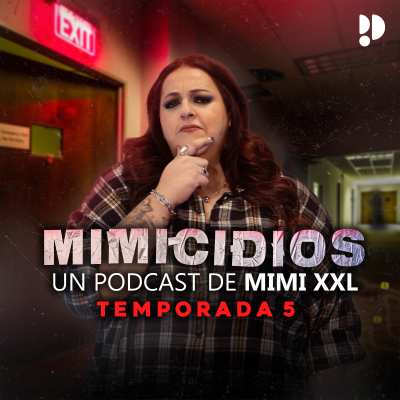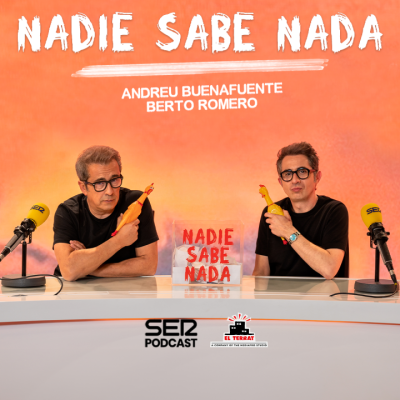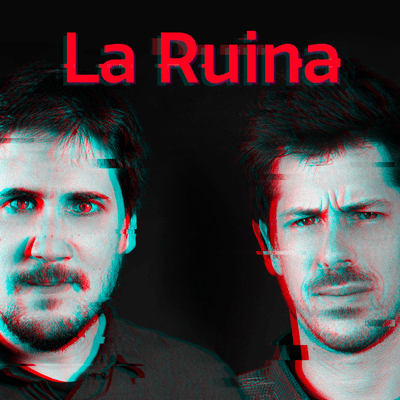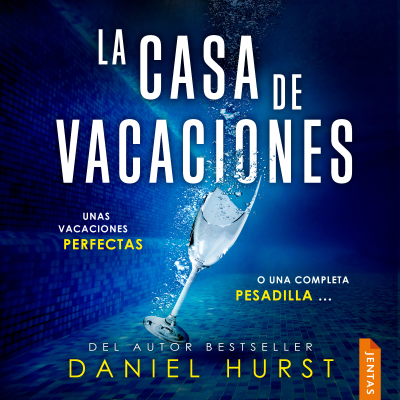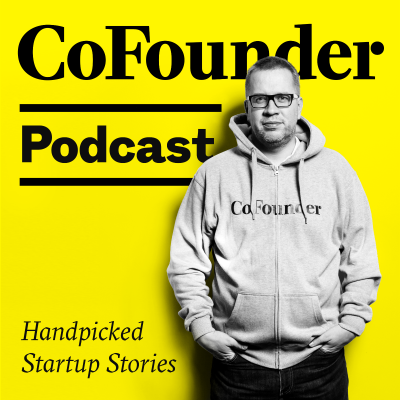
Disfruta 90 días gratis
4,99 € / mes después de la prueba.Cancela cuando quieras.
Todos los episodios
14 episodiosKristjan Maruste, co-founder of CoModule, spoke with Indrek Põldvee about building an Estonian-founded startup in Berlin. This startup is building a cloud platform for light electric vehicles – like bikes and scooters – enabling the end customer to connect with their vehicle through a smartphone app and the manufacturer to connect with their customers. CoModule promises to kill all the main anxieties people have with adopting electric vehicles: range anxiety, by visually displaying the available range and navigating the users to their destinations; security worries, by allowing tracking of the vehicle when it is stolen; and worries over battery lifetime information, by monitoring the cycles and performance of the battery. At the same time, the CoModule platform has a strong offering for manufacturers. Monitoring will help manufacturers minimise battery warranty issues, by supplying super-accurate information about battery performance. It will allow manufacturers to directly connect with their customers to increase loyalty and generate after-sales, and it will enable agile product development. “At a fleet management level, CoModule combines diagnostic and geolocation information to improve industrial processes, like spare part handling and vehicle redistribution, while analysing components’ performance,” it says. The young team has been working on battery technologies for years, and the main investor in CoModule is a big German VC firm, providing confidence for the future of the startup.
Kristjan Maruste, co-founder of CoModule [http://comodule.com], spoke with Indrek Põldvee about building an Estonian-founded startup in Berlin. This startup is building a cloud platform for light electric vehicles – like bikes and scooters – enabling the end customer to connect with their vehicle through a smartphone app and the manufacturer to connect with their customers. CoModule promises to kill all the main anxieties people have with adopting electric vehicles: range anxiety, by visually displaying the available range and navigating the users to their destinations; security worries, by allowing tracking of the vehicle when it is stolen; and worries over battery lifetime information, by monitoring the cycles and performance of the battery. At the same time, the CoModule platform has a strong offering for manufacturers. Monitoring will help manufacturers minimise battery warranty issues, by supplying super-accurate information about battery performance. It will allow manufacturers to directly connect with their customers to increase loyalty and generate after-sales, and it will enable agile product development. “At a fleet management level, CoModule combines diagnostic and geolocation information to improve industrial processes, like spare part handling and vehicle redistribution, while analysing components’ performance,” it says. The young team has been working on battery technologies for years, and the main investor in CoModule is a big German VC firm, providing confidence for the future of the startup. The post CoFounder Podcast No 5: CoModule, connecting bikes [https://www.cofmag.com/cofounder-podcast-comodule-battery/] appeared first on CoFounder [https://www.cofmag.com].
We spoke with Taizo Son, during his visit to the Latitude59 conference in Tallinn last year, about creating a movement, taking Slush to Japan and how he became an entrepreneur. What brings you to the Nordic countries so often? We often see you at Slush and now you’re here in Estonia. The first time I visited Helsinki was about four years ago, to join Slush as one of the keynote speakers. I was so shocked that there was such a ‘hot’ event being held in such a freezing country! The atmosphere is really cool – it’s like a rock concert. At the time, it was run by Miki Kuusi. He was a very young guy – only young guys can run such great events by themselves. At that time, there was so much Japanese media there and everybody kept asking me questions like: why do they not hold this kind of Slush events in Japan? I turned the question back to them and we all agreed that we should be introducing this kind of movement to the Asian people. After I returned to Tokyo, I spoke to others who shared those same passions. So, I emailed Miki, suggesting that we introduce the Slush movement to Japan and other Asian countries, and inviting him to come and help launch the movement in Tokyo. Miki was excited by the idea but we had to help fund it from Japan to make it possible for Slush to come to Tokyo. That was in January and we decided to hold the event in April – such a short period of time to make it happen! That was the beginning of my relationship with the Nordic countries. This is the first time I have visited Estonia and I’m finding it is one of the ‘hottest’ countries in the world. I don’t know why the Nordic and Baltic countries are so hot in innovation compared to other areas of the world. Perhaps it’s because the countries are small, so they have to be global from the beginning. Everyone here speaks fluent English too, so naturally, they can become international with more ease. If their mindset is global from the beginning though, then they can be very innovative, because they are always looking at the global market and how to be popular in the global market. You need to be very innovative for that. How successful have you been with your mission to take Slush to Japan? It’s not a 15,000-person event, right? We learned from the people at Slush that the most important thing is to create a community where we can share our passions and vision, rather than holding big events in a big venue. At the beginning, I started involving passionate people in Japan, but I found that although many people were passionate, they didn’t have any clue how to be motivated about it. Once I brought Slush to Tokyo, everybody became really excited – it ignited a fire. Going back a little, what ignited your fire for entrepreneurship? What was the moment when you thought, ‘Hey, I have to be an entrepreneur’? I asked a similar question to the Finnish people at Slush. They said that five or 10 years ago in Finland there was a similar situation to Japan today – big companies like Nokia were powering their world. Then all of a sudden, because the market situation changed and Nokia started to break up because of Google, Apple, Microsoft and so on, they felt that they had to do something new for their society. In Japan, a similar thing is happening. There are so many great establishments there: Toyota, Honda, Sony and so on. Most of the time people work for a big company, but these days, even the Japanese establishments are not doing so well. Some big companies are no longer profitable, so some young designers and entrepreneurs have started thinking that they need to do something new for society. Since Slush has such a cool atmosphere, like a rock concert or a club music event, young people are allured and attracted to it – all the entrepreneurs are such great, cool figures.
We spoke with Taizo Son, during his visit to the Latitude59 conference in Tallinn last year, about creating a movement, taking Slush to Japan and how he became an entrepreneur. What brings you to the Nordic countries so often? We often see you at Slush and now you’re here in Estonia. The first time I visited Helsinki was about four years ago, to join Slush as one of the keynote speakers. I was so shocked that there was such a ‘hot’ event being held in such a freezing country! The atmosphere is really cool – it’s like a rock concert. At the time, it was run by Miki Kuusi [https://cofmag.com/cofounder-podcast-no-4-elias-aalto-13-mln-downloads-man-wolt/]. He was a very young guy – only young guys can run such great events by themselves. At that time, there was so much Japanese media there and everybody kept asking me questions like: why do they not hold this kind of Slush events in Japan? I turned the question back to them and we all agreed that we should be introducing this kind of movement to the Asian people. After I returned to Tokyo, I spoke to others who shared those same passions. So, I emailed Miki, suggesting that we introduce the Slush movement to Japan and other Asian countries, and inviting him to come and help launch the movement in Tokyo. Miki was excited by the idea but we had to help fund it from Japan to make it possible for Slush to come to Tokyo. That was in January and we decided to hold the event in April – such a short period of time to make it happen! That was the beginning of my relationship with the Nordic countries. This is the first time I have visited Estonia and I’m finding it is one of the ‘hottest’ countries in the world. I don’t know why the Nordic and Baltic countries are so hot in innovation compared to other areas of the world. Perhaps it’s because the countries are small, so they have to be global from the beginning. Everyone here speaks fluent English too, so naturally, they can become international with more ease. If their mindset is global from the beginning though, then they can be very innovative, because they are always looking at the global market and how to be popular in the global market. You need to be very innovative for that. How successful have you been with your mission to take Slush to Japan? It’s not a 15,000-person event, right? We learned from the people at Slush that the most important thing is to create a community where we can share our passions and vision, rather than holding big events in a big venue. At the beginning, I started involving passionate people in Japan, but I found that although many people were passionate, they didn’t have any clue how to be motivated about it. Once I brought Slush to Tokyo, everybody became really excited – it ignited a fire. Going back a little, what ignited your fire for entrepreneurship? What was the moment when you thought, ‘Hey, I have to be an entrepreneur’? I asked a similar question to the Finnish people at Slush. They said that five or 10 years ago in Finland there was a similar situation to Japan today – big companies like Nokia were powering their world. Then all of a sudden, because the market situation changed and Nokia started to break up because of Google, Apple, Microsoft and so on, they felt that they had to do something new for their society. In Japan, a similar thing is happening. There are so many great establishments there: Toyota, Honda, Sony and so on. Most of the time people work for a big company, but these days, even the Japanese establishments are not doing so well. Some big companies are no longer profitable, so some young designers and entrepreneurs have started thinking that they need to do something new for society. Since Slush has such a cool atmosphere, like a rock concert or a club music event, young people are allured and attracted to it – all the entrepreneurs are such great, cool figures. The first year that we brought Slush to Japan everybody was really shocked like I had been the previous year. This year was our third and we’re finding that it is really easy for us to ignite a fire for lots of people in Japan now. What about you personally? When you started your first business, 15 or 20 years ago, what was the thing that moved you to entrepreneurship? Did you feel that you wanted to work for one of the big Japanese conglomerates, or did you prefer to build your own company? My family is an entrepreneurial family – my father is an entrepreneur and so is my brother, Masa. I was in Tokyo University at the time. It is one of the most well-established National Universities and most of the students there were very conservative. Often they were conservative because their fathers were not entrepreneurs but government people, national university professors, or something similar – not so innovative. So even though my father and brother were entrepreneurs, the people surrounding me were not particularly entrepreneurial and I was affected by those surroundings. It made me think that I couldn’t do big entrepreneurial things by myself, like my father and brother did. I was struggling to work out what kind of job I wanted to do. Then I met Jerry Yang, the founder of Yahoo. He had just started Yahoo Inc in the US at Stanford University. Meeting him more than 20 years ago was my first shock (the second was at Slush!). At that time, I could only benchmark against established companies like Toyota, but here was a Silicon Valley startup with an internet culture, and this geek guy, Jerry, was changing the world. Of course, even in Silicon Valley at the time search engines were not popular among people – everybody was asking Jerry what it was. He told me that he was using an interesting metaphor to explain what Yahoo was. He would say that Yahoo was making an apple fall in front of the future Newton. If the apple hadn’t fallen in front of Newton, what would have happened to the world? Newton might not have discovered gravity and he would not be a historically-famous person. I’m sure that someone would have discovered gravity 50 or 100 years later, but our technology would have been delayed for so much time. We might not have harnessed electricity. We might still be living with candles or might not have cars. We could still be riding horses. So in some ways, it had a really big impact on everything, that an apple fell down in front of the Newton. Jerry predicted that in the future all kinds of information, knowledge, and wisdom would be uploaded to the Internet, and if a search engine didn’t exist, the future Einsteins, Newtons and Edisons wouldn’t be able to find the right information and knowledge to discover something new. So in a sense, a search engine is really important for human beings. I was so shocked by that idea that I felt I should support the launch of a Japanese version of Yahoo for Japanese internet users. That was the beginning of my career. Fortunately, I experienced this great inspiration at the beginning of my career, so I could become an entrepreneur. That’s why I have come to Latitude59 in Estonia. I would like to provide a similar kind of experience to the young people here. So, 22 years later you’ve been building and investing in companies. When you meet young entrepreneurs with shining eyes who want to change the world, what’s the key advice you give to them? If I were to choose one piece of advice it would be to think big. That’s the key message from me. Sometimes in Silicon Valley, senior entrepreneurs praise younger entrepreneurs by complimenting them on how big they are thinking, which is really good. They praise it because to keep thinking, and staying, big is so difficult to manage. At the beginning, someone has a big idea, but once they start out on the execution of their idea they will eventually confront hardships and the idea will shrink to a smaller one. Of course, the idea becomes much more feasible, but it has shrunk to this smaller size. Keeping the big idea is a tough thing for anybody, but the people who change the world for the better are always thinking big. So if I give only one piece of advice to young people, it is that thinking big is the key. Is changing the world your mission, in a way? Yes. Because there are so many issues in the world for every kind of people. To solve the bigger issues, I don’t think one or two innovations is enough. We need to integrate and orchestrate those innovations so that we can make a collective impact on the world to solve the bigger issues. I’m always conscious that connecting dots is, ultimately, the most important thing we can do to accelerate innovations and solve the big issues in the world. I am always telling the young guys to think big and do something that no one else is doing. That way they can play a role as a catalyst towards making a collective impact. That’s my lifetime mission and goal. Where will you go next with that? What will be the next big mission for you? We have some projects that we call ‘orchestration projects’ – integrating innovations into collective impacts. One example I can share with you is that we would like to design a new city – urban planning designed from scratch, utilising the latest cutting-edge technologies, like autonomous vehicles and drones. We would like to update the way we work and live, and our healthcare indicators. Existing cities were designed in the twentieth century or earlier. Those designs were based on the technology available at that time. For example, if you look at Manhattan, it was built in the early twentieth century. At that time, the current technology was cars and trains, so Grand Central Station is the centre of the city and there are rows for cars to move around. It’s a car- and train-centric city. By utilising the latest technologies, I believe that we can design a human-centric city. Instead of adopting new technologies to the existing city, we can design new cities from scratch, so that we can utilise the new technologies in the best way, providing a tangible demonstration to stimulate the rest of the world into change. Have you already picked out the place where that city will be? We have some candidates in Asia, like Singapore, India or the south part of China, but we are still looking. Like the Slush movement, building a community that shares this idea is essential, not deciding on one or two locations but starting to share the idea with as many people as possible. I believe that, eventually, we will find some good partners and some of those partners will bring good opportunities and information – like information about building a new city from scratch. So, in the end, it could be in Estonia or Finland! In the middle of the tunnel Peter Vesterbacka is building? He introduced that idea. It’s just a coincidence that I’m thinking of building a city. But wow, this is serendipity, not just a coincidence! We might be able to be part of that project. Picture of Taizo Son from Latitude59 by Annika Haas The post CoFounder Podcast No 6: Taizo Son is taking Slush vibe to Japan [https://www.cofmag.com/taizo-son/] appeared first on CoFounder [https://www.cofmag.com].
Before launching Wolt, Elias Aalto first built a successful software consultancy, Qvik, and created an early hit game for iPhone. How did you become an entrepreneur? I was working as a consultant at Digia and someone showed me what they billed for my hours. It was 120 euros an hour and I was getting paid about 17. I thought: that’s over seven times more. I was, of course, naive in thinking that – as if there were no overheads in running a business and no risk associated with it. But that kicked off the emotion for me that I could sell myself doing the things I was doing at Digia. Why not cut out the middle man? Although I’m not saying that everyone should start their own consultancy, even if they’re working in software development. I remember, years ago, listening to you speak about your game, Wooden Labyrinth 3D, and how you struggled to make money from it. A lot of people saw that speech because I did it a couple times. It turns out that no one understood what I was saying though. This was before in-app purchases were really happening, but we had figured out how to make money using mobile games – it was the time of premium applications. What I discussed in my talk was how I had failed to monetise through advertisements and in-app purchases. Actually, the game sold quite well through the premium site, so in the end it made about half a million euros in revenue, prizes and so on. It was downloaded about 13 million times. How did you decide to jump into Wolt? I had been at Qvik for over five years. When you do consultancy it can be hard. Most times the projects that you do are not really that successful. Most products in the world fail. They’re not spectacular failures, but they’re not breakout international successes either. On the other hand, if you manage to create a project that is really successful, you’re then a bit annoyed that you don’t actually own a piece of it. You think: “Oh well, that was nice. Now it’s big and great but … well, I got billed by the hour.” I was looking back on the success of the game I had made, Wooden Labyrinth 3D, and thinking how it would be cool to make something again – something where I could say: “This is mine and this is the best.” So when I was contacted by Miki Kuusi to form a company I jumped at the chance. We had a meeting over coffee and I promised to get back to him over the weekend, but I called him back 30 minutes later to say “let’s do it, let’s give it a shot.” When did that happen? It was early 2014. At that point it was just me, Miki and Mika, our designer. We spent the summer building the proof of concept and gathering the rest of the team, then we founded the company. It was announced at Slush 2014. We have seen quite a boom of food delivery startups across Europe. Wolt takes food to homes. We have been doing this for a hundred years. Where’s the startup? What’s the revolution? First of all, there are two things here. We are not, and we never were, strictly a food delivery startup. That was not the thing that we were going after, and we’re still not. We’re in the business of restaurants and creating a digital interface for restaurants. Part of that is the delivery business. A delivery business provides instant gratification. You have this magic power to get something that you couldn’t get before – having something delivered that isn’t delivered naturally. But we also feel there’s an even bigger piece of the puzzle in the rest of the restaurant business, whether eating at the place or picking it up for yourself. We are trying to look at the restaurant business as a whole and sell all of that. The restaurant partners that we work with didn’t get to the industry just to found a kitchen. During delivery, they’re essentially just the kitchen, but they wanted to be restauranteurs. They want people to enjoy not just the food but the atmosphere and the spirit of going there. We want to help with that as well.
Disfruta 90 días gratis
4,99 € / mes después de la prueba.Cancela cuando quieras.
Podcasts exclusivos
Sin anuncios
Podcast gratuitos
Audiolibros
20 horas / mes

